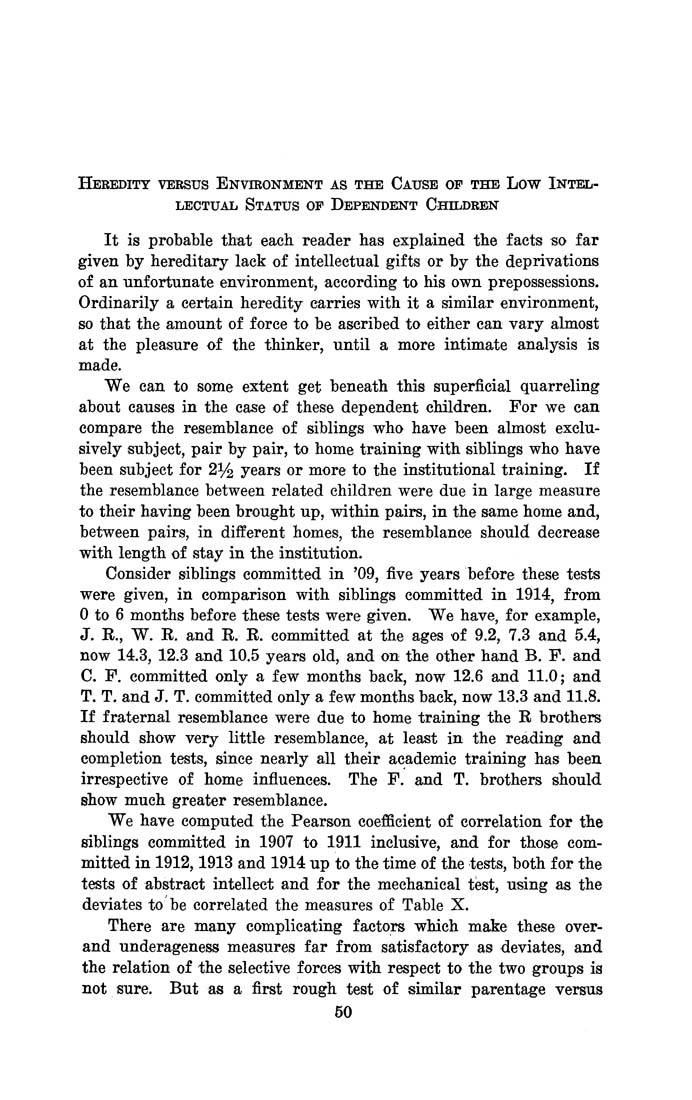Heredity versus Environment as the Cause op the Low Intel¬
lectual Status of Dependent Children
It is probable that each reader has explained the facts so far
given by hereditary lack of intellectual gifts or by the deprivations
of an unfortunate environment, according to his own prepossessions.
Ordinarily a certain heredity carries with it a similar environment,
so that the amount of force to be ascribed to either can vary almost
at the pleasure of the thinker, until a more intimate analysis is
made.
We can to some extent get beneath this superficial quarreling
about causes in the case of these dependent children. For we can
compare the resemblance of siblings who have been almost exclu¬
sively subject, pair by pair, to home training with siblings who have
been subject for 2i/^ years or more to the institutional training. If
the resemblance between related children were due in large measure
to their having been brought up, within pairs, in the same home and,
between pairs, in different homes, the resemblance should decrease
with length of stay in the institution.
Consider siblings committed in '09, five years before these tests
were given, in comparison with siblings committed in 1914, from
0 to 6 months before these tests were given. We have, for example,
J. E., W. E. and E. E. committed at the ages of 9.2, 7.3 and 5.4,
now 14.3, 12.3 and 10.5 years old, and on the other hand B. F. and
C. F. committed only a few months back, now 12.6 and 11.0; and
T. T. and J. T. committed only a few months back, now 13.3 and 11.8.
If fraternal resemblance were due to home training the E brothers
should show very little resemblance, at least in the reading and
completion tests, since nearly all their academic training has been
irrespective of home influences. The F. and T. brothers should
show much greater resemblance.
We have computed the Pearson coefficient of correlation for the
siblings committed in 1907 to 1911 inclusive, and for those com¬
mitted in 1912,1913 and 1914 up to the time of the tests, both for the
tests of abstract intellect and for the mechanical test, using as the
deviates to be correlated the measures of Table X.
There are many complicating factors which make these over-
and underageness measures far from satisfactory as deviates, and
the relation of the selective forces with respect to the two groups is
not sure. But as a first rough test of similar parentage versus
50
|








